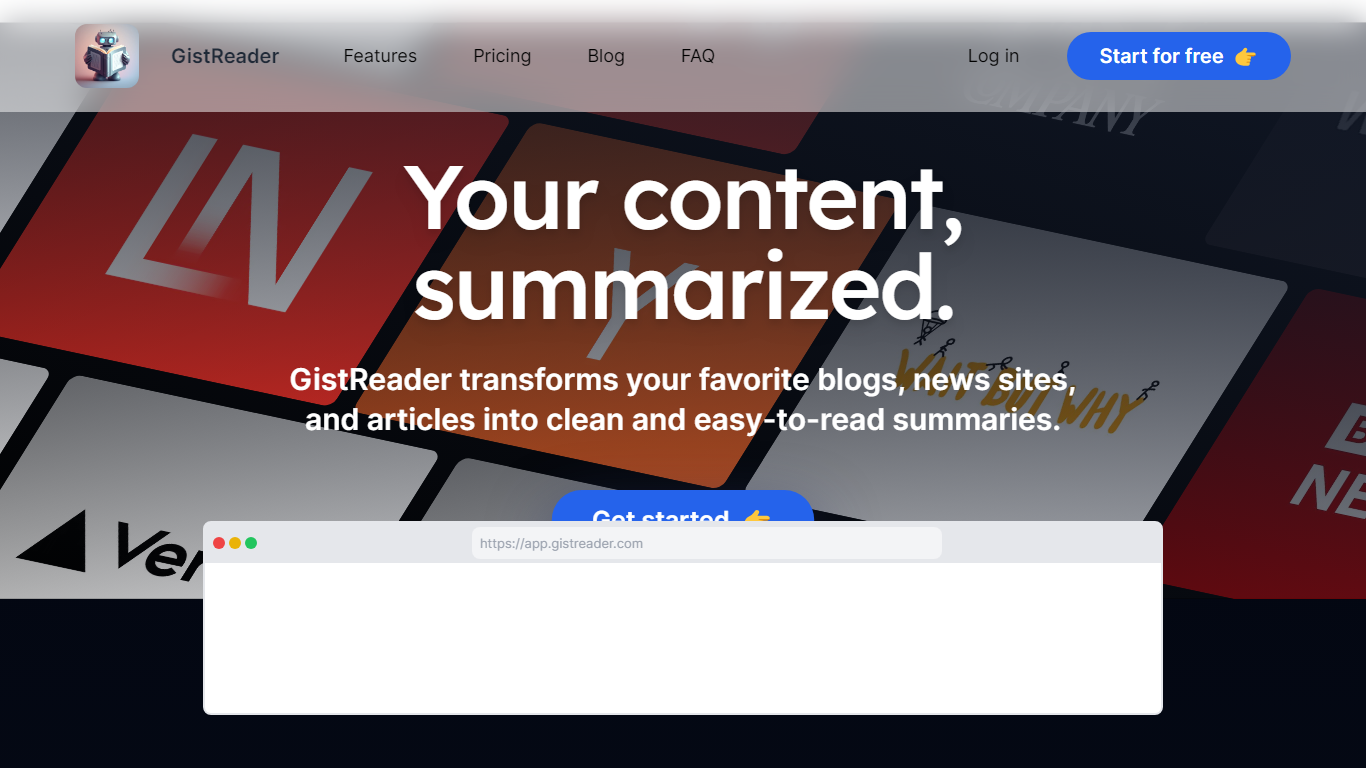GistReader vs Typeset
When comparing GistReader vs Typeset, which AI Summarizer tool shines brighter? We look at pricing, alternatives, upvotes, features, reviews, and more.
Between GistReader and Typeset, which one is superior?
When we put GistReader and Typeset side by side, both being AI-powered summarizer tools, Typeset is the clear winner in terms of upvotes. Typeset has attracted 25 upvotes from aitools.fyi users, and GistReader has attracted 6 upvotes.
Feeling rebellious? Cast your vote and shake things up!
GistReader

What is GistReader?
Maximize your online reading efficiency and enjoyment with GistReader—a cutting-edge tool designed to declutter and distill your favorite content. With AI-powered summaries, GistReader transforms blogs, news sites, and articles into concise, digestible formats. Experience seamless reading without distractions; GistReader strips away extraneous elements like ads, bringing you the essence of each piece. The tool also offers a novel way to consume content: articles can be converted into podcasts using top-notch text-to-speech technology, creating your personalized podcast feed. Compatible across all devices, GistReader ensures that your content and preferences stay in sync, whether you're on your phone, tablet, or computer. Plus, enjoy additional features such as keyboard shortcuts, Pocket integration, YouTube support, and more. Choose from flexible pricing plans to tap into premium features while taking comfort in a no-surprises subscription model, including free trials and straightforward cancellations.
Typeset

What is Typeset?
Your platform to explore and explain papers. Search for 270M+ papers, understand them in simple language, and find connected papers, authors, topics.
GistReader Upvotes
Typeset Upvotes
GistReader Top Features
Read without distraction: Transforms articles into a clean ad-free format for a focused reading experience.
AI summaries that save time: Utilizes AI to quickly provide the core message of each article.
Turn articles into podcasts: Features text-to-speech technology to convert reading material into a personal podcast.
Read anywhere: Syncs content across all devices for a seamless experience.
Flexible pricing: Offers a range of plans with premium features including a no-commitment free trial.
Typeset Top Features
No top features listedGistReader Category
- Summarizer
Typeset Category
- Summarizer
GistReader Pricing Type
- Freemium
Typeset Pricing Type
- Free
